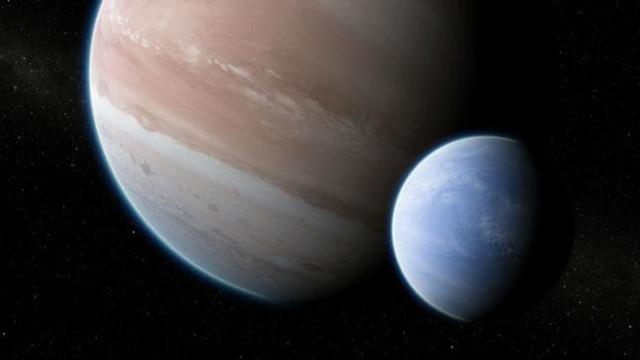You are here
Planet X myth debunked
By AFP - Mar 16,2014 - Last updated at Mar 16,2014
WASHINGTON – It was an elusive planet that for 200 years appeared to explain Uranus’s wobbly orbit. And there was the sister sun theorised to be near our solar system that caused asteroids to swerve toward Earth.
There is just one problem: Neither “Planet X” nor “Nemesis” ever existed, researchers now say.
Or probably not.
“The outer solar system probably does not contain a large gas giant planet (“Planet X”), or a small, companion star (“Nemesis”),” concluded University of Pennsylvania astronomer Kevin Luhman, who directed the study using NASA’s Wide-field Infrared Survey Explorer (WISE) telescope.
The results were published in the most recent edition of The Astrophysical Journal.
Most theories had estimated Planet X to be up to four times the size of Jupiter — the biggest planet in our solar system.
They suggested it would be found some 1,486 billion kilometres (923 billion miles) from the sun, or about 10,000 times farther than the Earth’s orbit.
But the images gathered by the telescope did not detect any object larger than Jupiter.
Luhman doesn’t rule out the possibility that a planet is lurking somewhere in the asteroid belt.
It would be hard to find if it were closely aligned with a bright star that blinds the telescope or were much smaller than had been theorised.
But after this latest survey, Luhman said the odds of finding one are very unlikely: “That is like a one in a hundred chance.”
History of Planet X
Scientists first imagined the existence of Planet X in 1781, when they discovered Uranus, a gas giant that astonished astronomers with its orbital variations, apparently incompatible with Newton’s laws of gravity.
Observers concluded that these irregularities could be explained by the existence of another, unknown planet that was exerting its own gravitational force.
Attempts to track this mysterious Planet X led to the discovery of Neptune in 1846. But the estimated mass of Neptune couldn’t explain the deviations of Uranus’s orbit.
That led astronomers to continue their search for Planet X — which, in turn, led to the discovery of Pluto in 1930. But the dwarf planet was also too small to explain Uranus’s irregular path around the sun.
Finally, in the 1990s, researchers determined that they had slightly overestimated the mass of Neptune, which meant the planet could in fact be the reason for Uranus’s orbital behaviour.
Yet Planet X believers were still not convinced.
Sister sun killed dinosaurs?
The existence of Nemesis, a sun-like star nearby, was first posited in the 1980s. The star, by occasionally coming closer to the sun, interfered with the orbit of comets and asteroids leading them to occasionally hit the Earth.
Collisions like these are blamed for the five mass extinctions over the last 540 million years — the most recent being the dinosaur extinction 65 million years ago.
“So over the years, there have been different pieces of evidence suggesting there might be something there,” Luhman explained to AFP.
But the WISE telescope didn’t find anything.
The hunt for Planet X and Nemesis may have turned up empty, but the study did uncover 3,525 stars and brown dwarfs — celestial objects whose mass puts them between a star and a large planet — within 500 light years of the sun.
“Neighbouring star systems that have been hiding in plain sight just jump out in the WISE data,” said Ned Wright, a University of California, Los Angeles astronomer who contributed to the study.
Related Articles
WASHINGTON — Astronomers have pinpointed what appears to be the first moon detected outside our solar system, a large gaseous world th
A couple years ago, astronomers made a surprising discovery: A significant number of asteroids were missing from the central region of the s
By Qasim NaumanAgence France-Presse SEOUL — The largest asteroid to pass by Earth this year has made its closest approach, posing no th

















